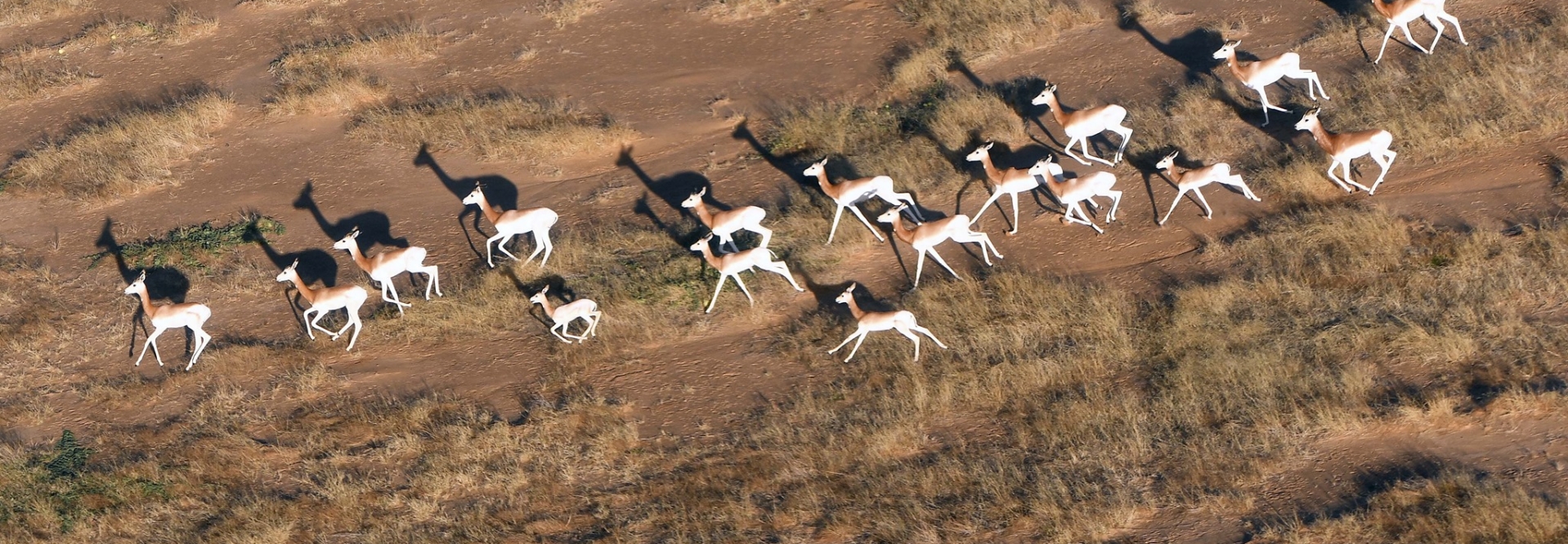
Dama gazelle
Once widespread throughout the Sahel, the dama gazelle is one of the planet’s most endangered species, with surely less than 200 remaining wild animals in Chad and Niger.
The dama gazelle is the largest of all gazelles (40-75 kg), with a two-tone white and rusty red pelage. The extent of the red coloration is quite variable but broadly linked to morphological differences between the three recognized subspecies: N. d. ruficollis, N. d. dama, N. d. mhorr. Dama gazelles live in small herds of 5-10 individuals, occasionally forming larger groups during seasonal movements or when drawn to areas of fresh grazing. The species is more Sahelian than Saharan in distribution, preferring sparsely wooded grasslands.
Once commonplace on fixed dune systems, often in association with scimitar-horned oryx and dorcas gazelle, the remaining populations are now isolated, pushed into rather marginal, atypical sub-desert and rocky refugia.
ID card
Scientific name:
Nanger dama
IUCN Red list status :
Critically endangered
How many left in the wild:
Fewer than 200 adults, but this number could be as low as 85 to 120 animals.
Geographic distribution:
Now only four highly scattered populations: two in Niger (in the Termit Massif and Aïr Mountains) and two in Chad (in the Manga and the Ouadi Rimé – Ouadi Achim Faunal Reserve) representing less than 1% of the initial area occupied.

Threats and challenges

© Sahara Conservation
The dama gazelle is considered one of the most threatened ungulates on the planet.
Illegal and uncontrolled hunting has been and continues to be the main factor behind its decline in numbers.
Habitat loss and degradation from natural causes such as desert encroachment and droughts, combined with anthropogenic pressures from land use, development, and other human activities, are having serious effects on vegetation quality and quality, and have significantly contributed to the reduction in the gazelle’s range.
As a result, residual populations of dama gazelles are relatively small and fragmented and likely exposed to the risk of inbreeding.



